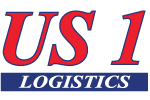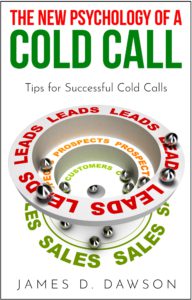Tired of hitting a ceiling? These strategies will help you break through and build a powerhouse logistics business.
Running a logistics brokerage can feel like steering an 18-wheeler uphill—slow, steady, and requiring serious horsepower. Whether you’re just breaking into the game or you’ve been booking freight for years, the key to scaling your business in 2025 is working smarter, not just harder.
In this blog, we’ll break down seven real-world strategies that top-performing agents are using to grow their logistics operations, build long-term client relationships, and maximize profits. Let’s hit the gas.
1. Automate Your Workflow Before It Breaks You
Hook: Still juggling spreadsheets and chasing paper trails?
Manual processes are the bottleneck of every growing brokerage. Automate your quoting, tracking, and invoicing with tools like TMS (Transportation Management Systems) and CRM platforms.
Tip: Platforms like AscendTMS or Tailwind help streamline operations, giving you more time to focus on clients, not clerical chaos.
📊 Stat: Brokerages using automation see 30% faster response times and a 25% boost in productivity, according to FreightWaves.
2. Specialize to Maximize
Hook: Generalists get overlooked—specialists get sought out.
Focusing on a niche (e.g., refrigerated freight, oversized loads, cross-border logistics) positions you as an expert, not just another agent.
Tip: Study local or underserved markets. For example, if you’re based near a port, specialize in drayage and container transport.
“When you’re the best at something specific, price becomes less of a conversation,” says logistics coach Tyler Mays.
3. Use Data to Guide Decisions, Not Just React
Hook: Don’t fly blind—your load board isn’t your business strategy.
Dive into freight analytics tools like DAT iQ or SONAR to understand market trends, lane profitability, and rate fluctuations.
Tip: Build weekly dashboards to spot underperforming lanes or seasonal opportunities.
4. Upgrade Your Carrier Network
Hook: Great service doesn’t come from the lowest bidder.
Vet your carriers not just on price, but on reliability, safety, and communication. A few solid carriers can be more valuable than 50 unknowns.
Tip: Use carrier scorecards to track metrics like on-time delivery and claims history.
📊 Stat: Brokerages that regularly review and rate carriers report a 40% drop in service failures.
5. Double Down on Digital Marketing
Hook: If you’re not online, you’re invisible.
A professional website, optimized LinkedIn presence, and niche-specific content can attract shippers and carriers alike. Use SEO to rank for search terms like “reliable reefer freight broker in Texas.”
Tip: Publish blog posts on freight trends, tips for shippers, or carrier onboarding FAQs. It builds trust and drives traffic.
6. Create Recurring Revenue Streams
Hook: A one-time deal is just a transaction—recurring clients are a business.
Offer contract rates or managed logistics services. The more embedded you are in a client’s supply chain, the harder you are to replace.
Tip: Use monthly performance reviews to build trust and upsell services.
“Our best clients are the ones who think of us as logistics partners, not vendors,” says freight agency owner Marcus Vega.
7. Invest in Sales Training and Systems
Hook: Talent wins games, but systems win championships.
Sales is the engine of your growth. Whether it’s cold calls or inbound leads, you need scripts, follow-up workflows, and KPIs.
Tip: Train your team in logistics sales, not just generic techniques. Selling truckloads is different than selling software.
📊 Stat: Brokerages with structured sales processes close 20% more deals on average, per HubSpot’s 2024 sales survey.
🚀 Conclusion: Scale Smart, Grow Fast
Scaling a logistics brokerage in 2025 isn’t about working more hours—it’s about building systems that work for you. From automation and niche focus to marketing and analytics, these seven strategies give you a competitive edge.
Start with one, master it, then move to the next. And remember—no one scales alone. Whether it’s tech, carriers, or mentors, build a strong network and keep your wheels turning.
Ready to grow? Start with the strategy that speaks to your biggest bottleneck—and shift into high gear.


Recent Comments